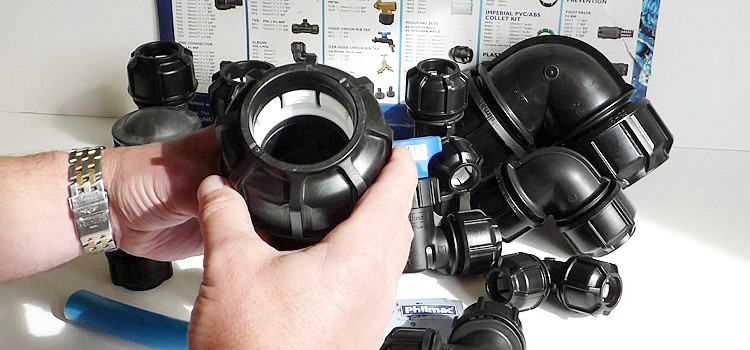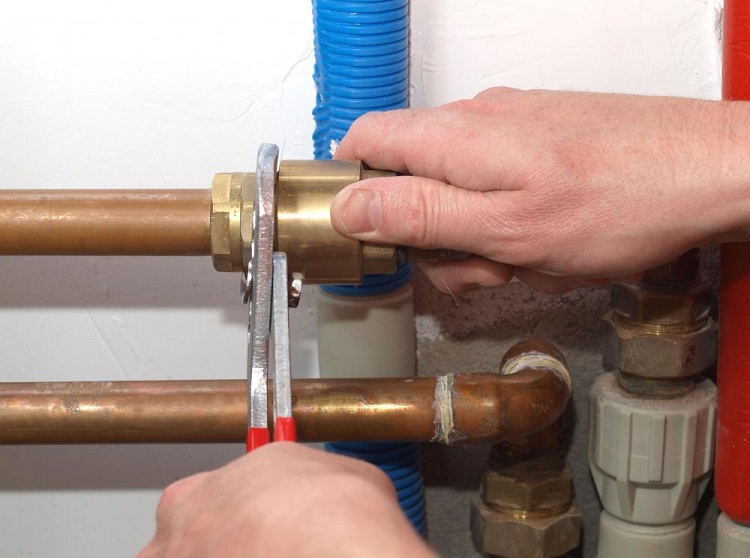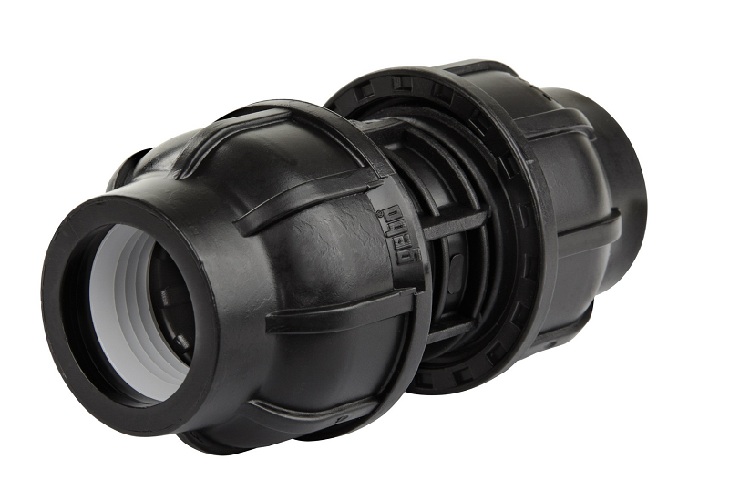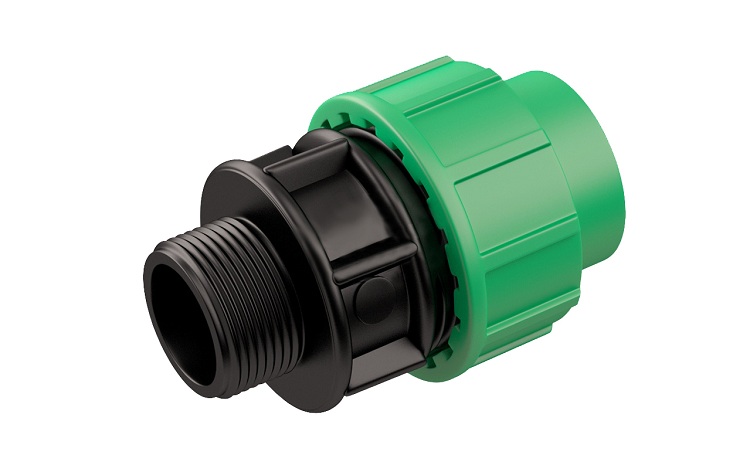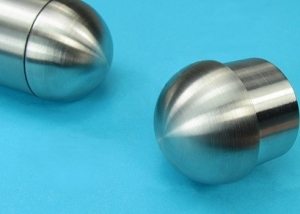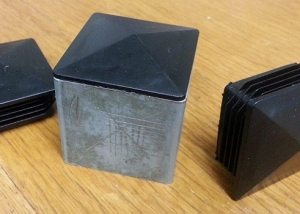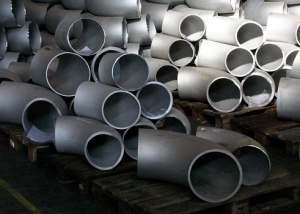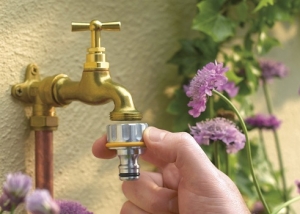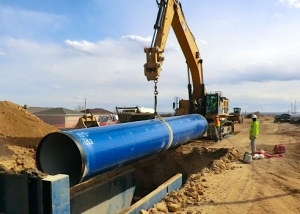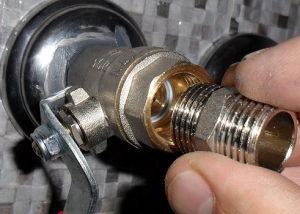Compression couplings are a type of fittings that perform the function of quickly joining pipes with equal diameters. This connecting element is used in water supply systems (drinking and technical), irrigation, sewer structures, etc. Such fittings are made of different materials and they can be connected all types of pipes.
Content
Benefits of using compression fittings
Each design has its own advantages. Compression products for joining pipes are very reliable and have such positive qualities:
- the connection obtained using this type of fittings does not need monitoring and periodic checks;
- this joint has excellent tightness. If necessary, it can be mounted in concrete;
- possesses good resistance to pressure in pipeline systems;
- has resistance to corrosion;
- the compression product is environmentally friendly and can be safely used in drinking pipelines;
- It has a huge assortment of varieties, and this makes it possible to combine pipes from different materials or with different diameter indicators;
- easy to install. Installation can be done very quickly and without using any special equipment.
- long service life (up to 20 years).
Application features
Couplings are very common elements that make up a variety of designs. This part is represented by numerous options and types and is used in a variety of designs - from pipelines to air conditioners (the compressor clutch is an electromagnetic type of fitting). Let's take a closer look at the products that are used in pipeline systems.
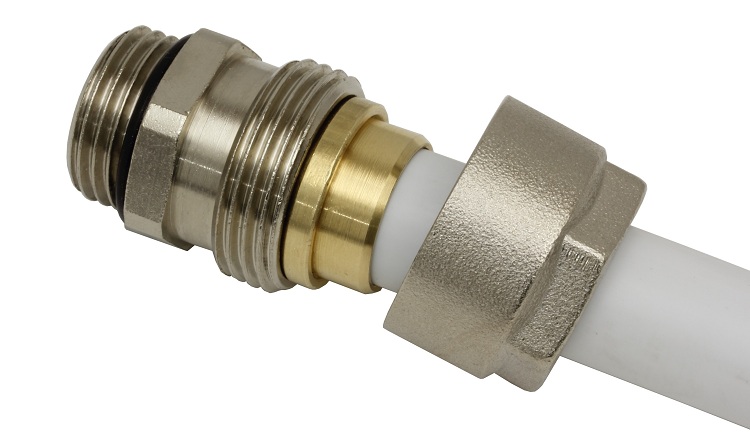
The tightness of the connection with the compression sleeve is ensured by a thread on which the nut is screwed tightly
Previously, the threaded type fittings were the most popular among the people, since they had good qualities. The main advantage of threaded connections was that such designs were considered detachable. However, threaded fittings also had a number of disadvantages: low tightness indicators, low vibration resistance, and installation complexity. To tighten the thread, it was necessary to rotate the fitting or the workpiece along its axis.
A compression coupler is an improved option for such a fitting. Its design includes more parts. Docking pipes with this device is more reliable and has increased tightness. The service life of such a connection is higher than that of threaded structures. In addition, the installation of such a coupling is simpler and faster. Such a device is used in various fields, but it is most popular when installing water supply and heating pipelines in private houses and apartments.
This product is made from different materials: brass, steel, cast iron.However, the most common option is plastic couplings made of low pressure polyethylene (HDPE) or other types of this polymer. Plastic couplings have high technical characteristics and are resistant to the harmful effects of corrosion. They also differ in relatively low cost in comparison with metal counterparts.
Compression Coupling Structure
As mentioned above, PND products differ from threaded type couplings by a large number of constituent elements. Some parts of this connector are made of metal. In addition, these fittings are equipped with rubber gaskets, but the main elements are plastic.
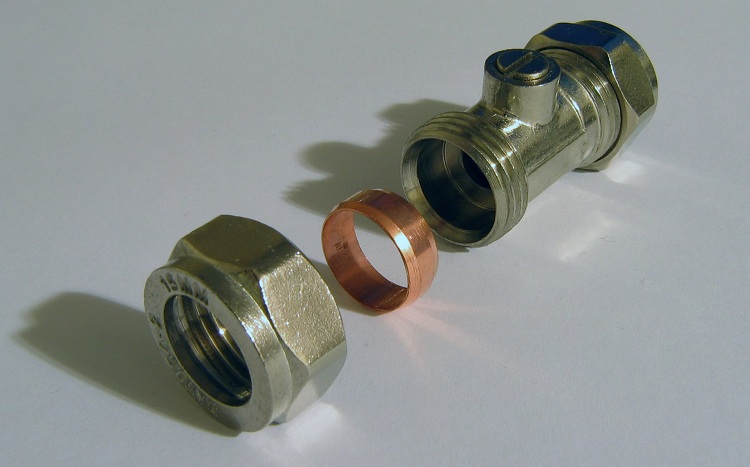
The compression coupling consists of several parts, they must be put on the pipe in the prescribed manner
The main structural elements of compression couplings:
- collet;
- o-rings;
- thrust rings;
- limiters;
- nuts.
The collet is a small piece of metal or plastic and has a thread on two sides.
Seals are put on pipes. They are needed to improve the integrity of the structure. Thanks to gaskets and stoppers, all fitting elements are firmly fixed in place. When tightening the outer nuts, the tightening force acts on the o-rings, which allows you to create a tight, tight connection.
External nuts are used to tighten and thereby fix the entire structure. Nuts are mounted on the collet thread. They clamp the thrust and sealing parts.
With proper installation, a technically reliable connection is obtained. It does not weaken with time and does not need periodic inspections. In addition, the ease of installation of the compression part is one of the determining factors that customers pay attention to when choosing it.
Types of compression couplings
First of all, all compression couplings are divided by design features into:
- collet;
- threaded.
A coupling equipped with collet clamps has a number of qualities:
- Prior to installation, no preliminary disassembly of the part is required.
- A part with a collet element can be mounted on cross-linked polyethylene pipes.
- The working pressure of this product is up to 16 bar.
- Ideal for drinking and technical piping systems.
The main characteristics of compression parts with collet clamps are presented in table No. 1.
Table 1
| Diameter mm | Weight kg | Length mm |
| 110 | 2,27 | 354 |
| 90 | 1,72 | 314 |
| 75 | 1,41 | 290 |
| 63 | 0,57 | 214 |
| 50 | 0,33 | 195 |
| 40 | 0,26 | 178 |
| 32 | 0,15 | 126 |
| 25 | 0,1 | 122 |
| 20 | 0,078 | 122 |
| 16 | 0,075 | 117 |
Threaded couplings are usually divided according to the options for the location of the thread into:
- parts with external thread;
- parts with internal thread.
Compression sleeve with external thread
A product equipped with an external thread is used in drinking and technical pipeline structures, as well as in irrigation systems. The location of the thread outside allows you to easily connect the pipes. The material of such a coupling has high quality indicators, which allows them to be used in systems with a working pressure of up to 16 bar. The life of a compression fitting with an external thread is up to 20 years.
The characteristics of compression parts with external threads are presented in table No. 2.
table 2
| Diameter mm | Weight kg | Length mm |
| 110 | 1,30 | 226 |
| 90 | 0,96 – 1,03 | 203 – 205 |
| 75 | 0,77 – 0,78 | 173 – 178 |
| 63 | 0,31 – 0,57 | 128 – 160 |
| 50 | 0,160 – 0,165 | 109 |
| 40 | 0,138 – 0,139 | 104 – 105 |
| 32 | 0,066 – 0,085 | 81 – 83 |
| 25 | 0,050 – 0,064 | 80 – 81 |
| 20 | 0,035 – 0,037 | 75 – 76 |
| 26 | 0,039 – 0,040 | 71 – 73 |
Compression coupling with internal thread
It is used for mounting connections to pipes with fittings with external thread. In addition, this product can be used for joints with ball valves and various adapters in water supply and heating systems.
Due to the location of the thread, such a part can be used for joining plastic pipes with metal taps, gate valves and other valves.The working pressure for such products reaches 16 bar. The price of this type of fitting is relatively low, and operational performance is quite high. The service life under normal conditions is up to 20 years.
The characteristics of compression parts with internal thread are summarized in table No. 3.
Table 3
| Diameter mm | Weight kg | Length mm |
| 110 | 1,55 – 1,84 | 222 |
| 90 | 1,05 – 1,35 | 202 |
| 75 | 0,79 – 0,84 | 169 – 174 |
| 63 | 0,33 – 0,37 | 127 |
| 50 | 0,17 – 0,22 | 111 |
| 40 | 0,14 – 0,15 | 105 |
| 32 | 0,09 – 0,1 | 92 – 94 |
| 25 | 0,05 – 0,07 | 87 |
| 20 | 0,045 | 77 |
| 16 | 0,046 – 0,052 | 77 |
In addition, it is customary to divide all couplings according to the type of action into:
- connecting;
- transient.
Compression joint products are used in the joint of pipes, which have the same section sizes. As a rule, these parts are mounted on straight sections of the pipeline. Transitional devices are used if it is necessary to make a joint of two pipes with different diameters. Using this type of fitting, it is possible to carry out the transition from a plastic pipe to a metal one.
Installation Steps
Couplings have different diameters, but the most common is a diameter of 110 mm.
Installation of a part of this size is carried out taking into account a number of rules:
- Before starting installation, it is worth preparing the pipes. The edges of the pipe are cleaned from rust, paint, burrs must be removed. The necessary markings are applied to the pipes. In order to mark the pipes, you can use a conventional marker.
- Nuts, thrust elements and gaskets are thrown on the edges of the joined pipes. The sequence of elements should be clearly observed. The nuts are tightened last, which means they need to be put on the pipes first. Then there are thrust rings and gaskets.
- The resulting design should be fixed so that a sealed assembly is obtained. If manual effort is not enough, it is permissible to use a wrench of a suitable diameter.
The entire installation with the correct execution of the work takes no more than 5 minutes. Such a connection is considered detachable, so if necessary, you can easily dismantle the structure. To do this, just loosen one of the outer nuts of the coupling and remove the pipe from the fitting.
